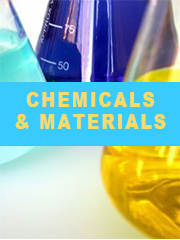Report overview
Automotive-grade pearlescent material is a pearlescent material with high weather resistance achieved through multi-layer coating technology and special surface treatment process. The automotive-grade pearlescent material has extremely high optical refractive index, pearlescent effect and viewing angle flashing effect. It has passed the rigorous artificial aging test, paint film adhesion, cross-cut knife detection and other procedures, and has the advantages of moisture resistance, high temperature resistance, corrosion resistance, etc. High weather resistance and environmental protection performance, mainly used in automotive coatings (automotive original OEM paint, high-grade refinish paint), exterior wall coatings, other weather-resistant coatings (metal fluorocarbon paint, coil paint, etc.).
This report aims to provide a comprehensive presentation of the global market for Automotive Grade Pearlescent Material, with both quantitative and qualitative analysis, to help readers develop business/growth strategies, assess the market competitive situation, analyze their position in the current marketplace, and make informed business decisions regarding Automotive Grade Pearlescent Material. This report contains market size and forecasts of Automotive Grade Pearlescent Material in global, including the following market information:
Global Automotive Grade Pearlescent Material Market Revenue, 2018-2023, 2024-2029, ($ millions)
Global Automotive Grade Pearlescent Material Market Sales, 2018-2023, 2024-2029, (Tons)
Global top five Automotive Grade Pearlescent Material companies in 2022 (%)
The global Automotive Grade Pearlescent Material market was valued at US$ million in 2022 and is projected to reach US$ million by 2029, at a CAGR of % during the forecast period. The influence of COVID-19 and the Russia-Ukraine War were considered while estimating market sizes.
The U.S. Market is Estimated at $ Million in 2022, While China is Forecast to Reach $ Million.
Pearl White Segment to Reach $ Million by 2029, with a % CAGR in next six years.
The global key manufacturers of Automotive Grade Pearlescent Material include Merck Group, BASF SE, CQV, NIHON KOKEN KOGYO, DIC Corporation, Altana, RIKA Technology, Nihon Koken Kogyo and Kolortek, etc. in 2022, the global top five players have a share approximately % in terms of revenue.
We surveyed the Automotive Grade Pearlescent Material manufacturers, suppliers, distributors and industry experts on this industry, involving the sales, revenue, demand, price change, product type, recent development and plan, industry trends, drivers, challenges, obstacles, and potential risks.
Total Market by Segment:
Global Automotive Grade Pearlescent Material Market, by Type, 2018-2023, 2024-2029 ($ Millions) & (Tons)
Global Automotive Grade Pearlescent Material Market Segment Percentages, by Type, 2022 (%)
Pearl White
Pearl Pink
Others
Global Automotive Grade Pearlescent Material Market, by Application, 2018-2023, 2024-2029 ($ Millions) & (Tons)
Global Automotive Grade Pearlescent Material Market Segment Percentages, by Application, 2022 (%)
Commercial Vehicle
Passenger Vehicle
Global Automotive Grade Pearlescent Material Market, By Region and Country, 2018-2023, 2024-2029 ($ Millions) & (Tons)
Global Automotive Grade Pearlescent Material Market Segment Percentages, By Region and Country, 2022 (%)
North America
US
Canada
Mexico
Europe
Germany
France
U.K.
Italy
Russia
Nordic Countries
Benelux
Rest of Europe
Asia
China
Japan
South Korea
Southeast Asia
India
Rest of Asia
South America
Brazil
Argentina
Rest of South America
Middle East & Africa
Turkey
Israel
Saudi Arabia
UAE
Rest of Middle East & Africa
Competitor Analysis
The report also provides analysis of leading market participants including:
Key companies Automotive Grade Pearlescent Material revenues in global market, 2018-2023 (Estimated), ($ millions)
Key companies Automotive Grade Pearlescent Material revenues share in global market, 2022 (%)
Key companies Automotive Grade Pearlescent Material sales in global market, 2018-2023 (Estimated), (Tons)
Key companies Automotive Grade Pearlescent Material sales share in global market, 2022 (%)
Further, the report presents profiles of competitors in the market, key players include:
Merck Group
BASF SE
CQV
NIHON KOKEN KOGYO
DIC Corporation
Altana
RIKA Technology
Nihon Koken Kogyo
Kolortek
OXEN New Materials
Fujian Kuncai Material Technology
CHESIR
RIKA Technology
Outline of Major Chapters:
Chapter 1: Introduces the definition of Automotive Grade Pearlescent Material, market overview.
Chapter 2: Global Automotive Grade Pearlescent Material market size in revenue and volume.
Chapter 3: Detailed analysis of Automotive Grade Pearlescent Material manufacturers competitive landscape, price, sales and revenue market share, latest development plan, merger, and acquisition information, etc.
Chapter 4: Provides the analysis of various market segments by type, covering the market size and development potential of each market segment, to help readers find the blue ocean market in different market segments.
Chapter 5: Provides the analysis of various market segments by application, covering the market size and development potential of each market segment, to help readers find the blue ocean market in different downstream markets.
Chapter 6: Sales of Automotive Grade Pearlescent Material in regional level and country level. It provides a quantitative analysis of the market size and development potential of each region and its main countries and introduces the market development, future development prospects, market space of each country in the world.
Chapter 7: Provides profiles of key players, introducing the basic situation of the main companies in the market in detail, including product sales, revenue, price, gross margin, product introduction, recent development, etc.
Chapter 8: Global Automotive Grade Pearlescent Material capacity by region & country.
Chapter 9: Introduces the market dynamics, latest developments of the market, the driving factors and restrictive factors of the market, the challenges and risks faced by manufacturers in the industry, and the analysis of relevant policies in the industry.
Chapter 10: Analysis of industrial chain, including the upstream and downstream of the industry.
Chapter 11: The main points and conclusions of the report.
